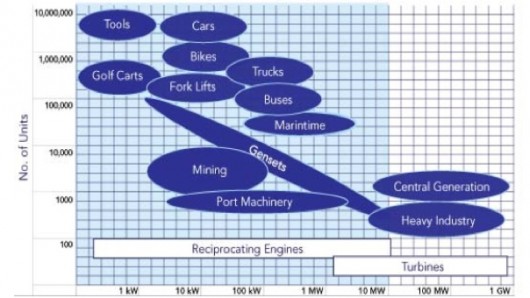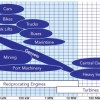Another zero-emissions powerplant emerges - the Dearman Engine runs on liquid air
By Jack Martin
00:15 January 24, 2012

Another zero-emissions powerplant emerges - the Dearman Engine runs on liquid air
Image Gallery (4 images)A new zero-emissions engine capable of competing commercially with hydrogen fuel cells and battery electric systems appeared on the radar yesterday when respected British engineering consultancy Ricardo validated Dearman engine technology and its commercial potential. The Dearman engine operates by injecting cryogenic (liquid) air into ambient heat inside the engine to produce high pressure gas that drives the engine - the exhaust emits cold air. It's cheaper to build than battery electric or fuel cell technology, with excellent energy density, fast refuelling and no range anxiety.
Think of the Dearman engine as an internal combustion engine without a spark plug, with cryogenic liquid air injected instead of petroleum. There is no combustion, but the as the air is stored at cryogenic temperatures (sub minus 160 degrees Celsius), ambient temperatures can superheat it and return it to gaseous air, causing a rapid expansion of gases similar.
When the piston is at the top of the cylinder, some heat exchange fluid is admitted to the engine cylinder. Immediately after this a small quantity of cryogenic liquid is sprayed into the cylinder; it comes into contact with the ambient (but in relative terms to the cryogenic temperatures, superhot) heat exchange fluid and boils very rapidly, building up pressure and pushing the piston down.
At the bottom of the stroke the exhaust valve opens and the returning piston pushes the heat exchange fluid and air out of the engine where the heat exchange fluid is recovered and the cold air exhausted. At the top of the stroke a new cycle begins.
Using cryogenic liquids as the energy carrier makes a lot of sense, most importantly because the energy density of liquid air compares favourably to the only two current technologies (Nitrogen and batteries) in contention for powering the zero-emission engines that will be used in subsequent generation automobiles, ships, forklifts, motorcycles, buses, trucks, mining equipment, through to certain classes of gensets.
Convenience (aka very fast re-fuelling times) is likely to be the other big selling point in comparison with the other zero emission technologies.
Air is superabundant and cryogenic liquids are already produced and distributed in huge volumes in all countries, making the necessary supporting infrastructure for Dearman engine introduction inexpensive.
Liquid air is a low-risk energy source - it is stored at low pressure and has no combustion risk. Whatsmore, the insulated tank used for is storage is cheaper to produce than re-enforced high-pressure vessels and the marginal cost of additional energy storage is very low - just increase the tank size.
On top of all of that, there are number of other technologies servicing different scales of applications that are being developed that could all use the same energy vector (cryogenic liquid) and share the infrastructure. Last but not least, none of the proposed technologies require scarce materials.
Ricardo and Dearman are now working together to bring the technology "closer towards commercial maturity."
Copyright © gizmag 2003 - 2011 To subscribe or visit go to: http://www.gizmag.com


